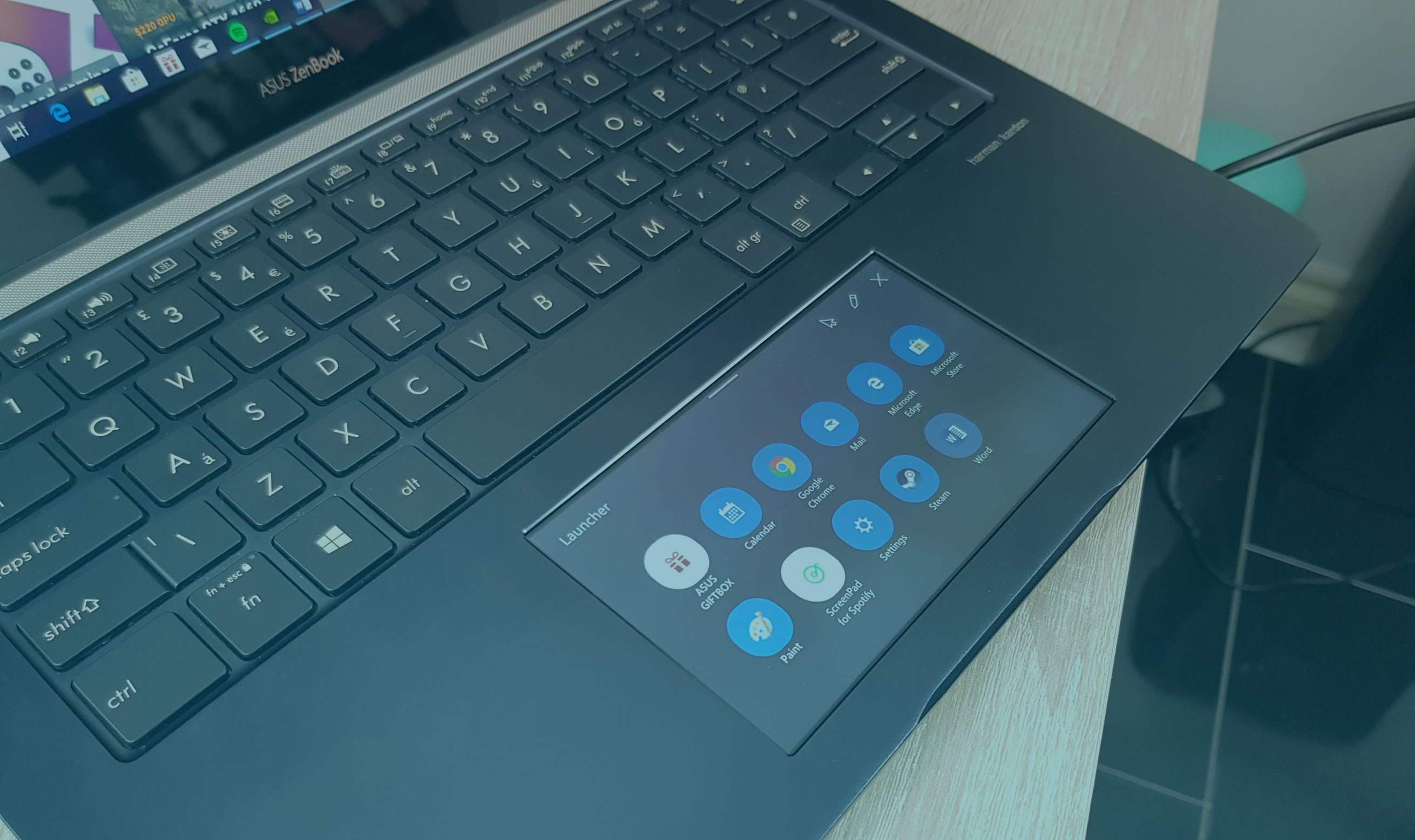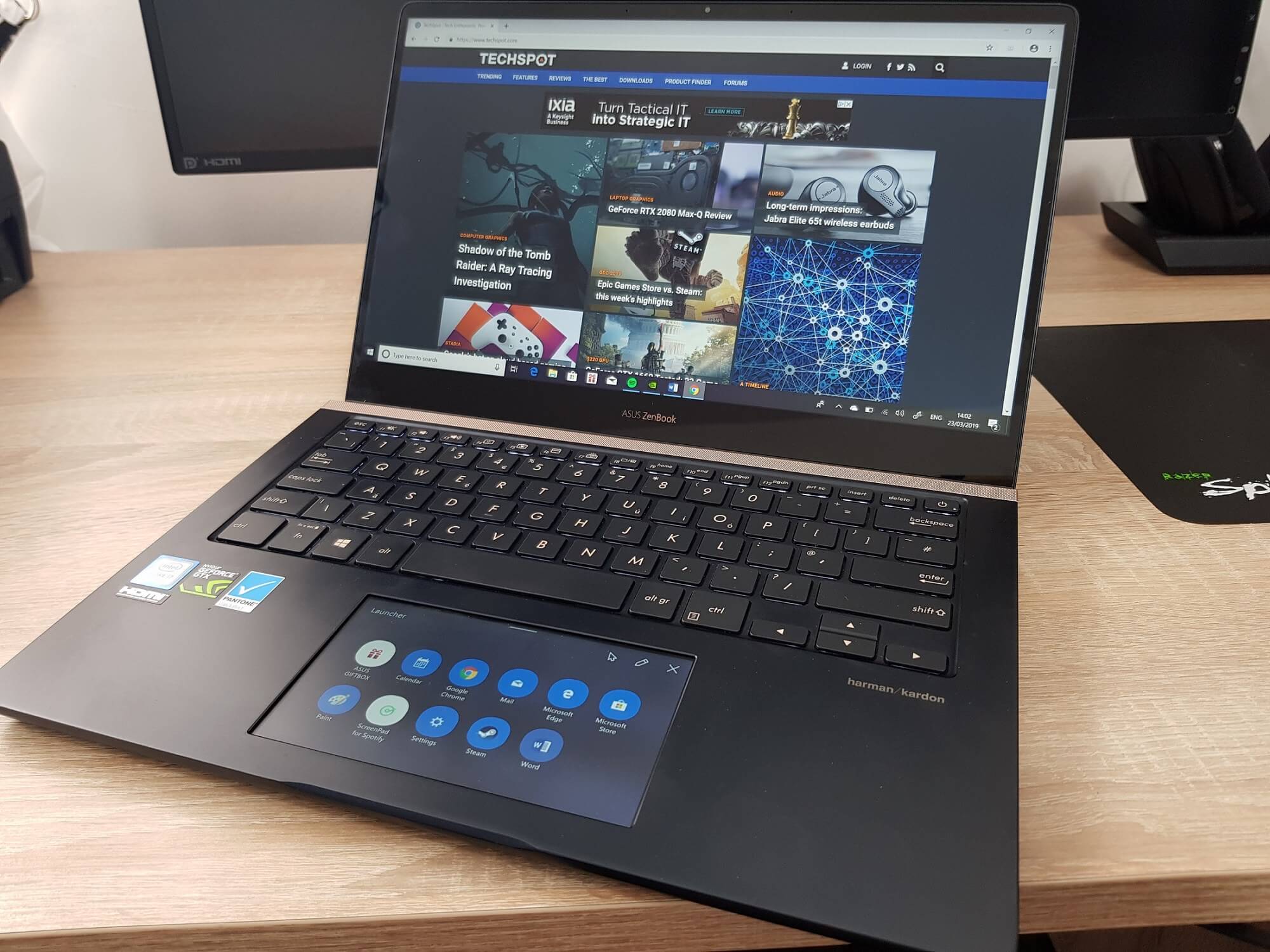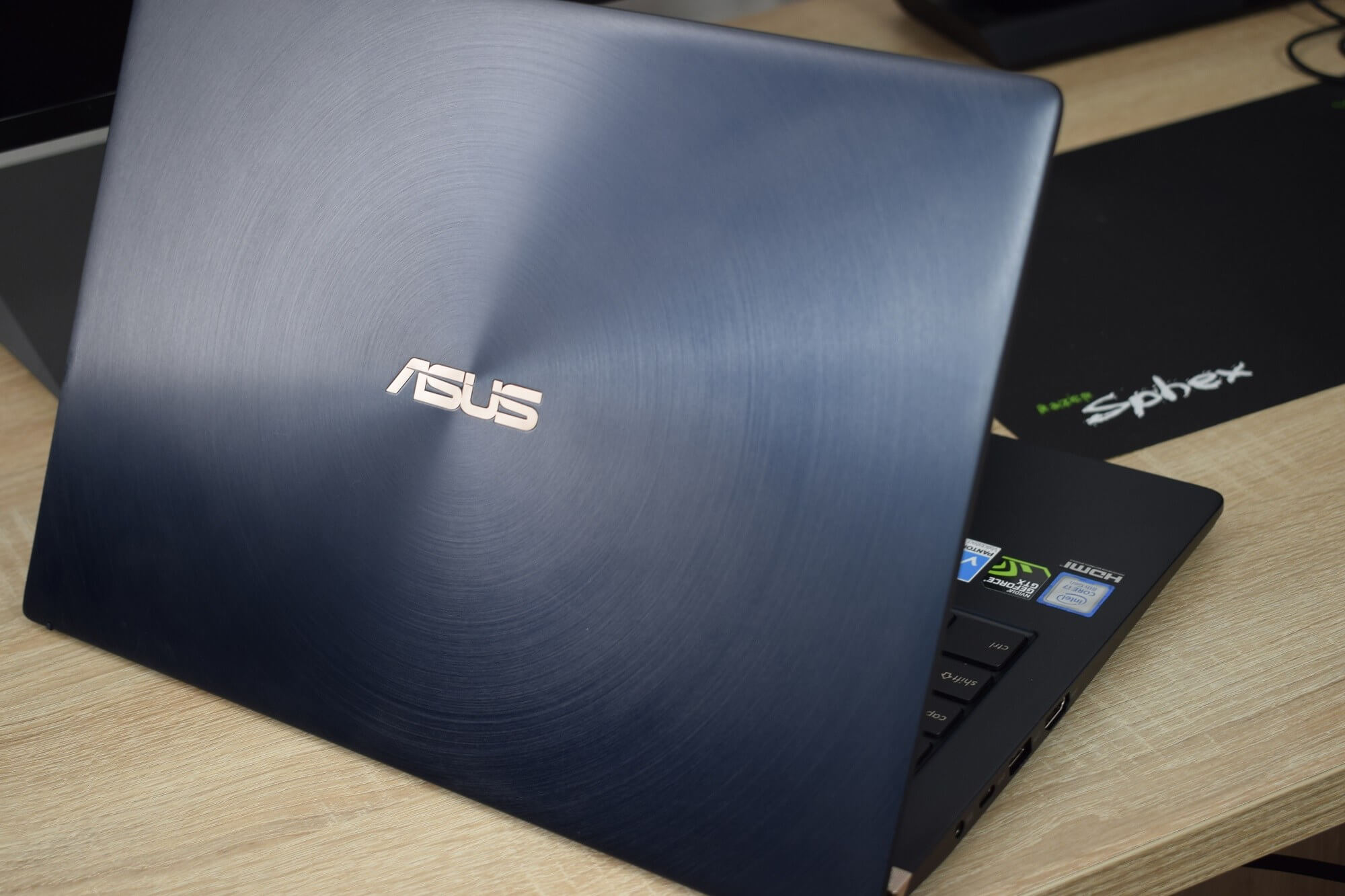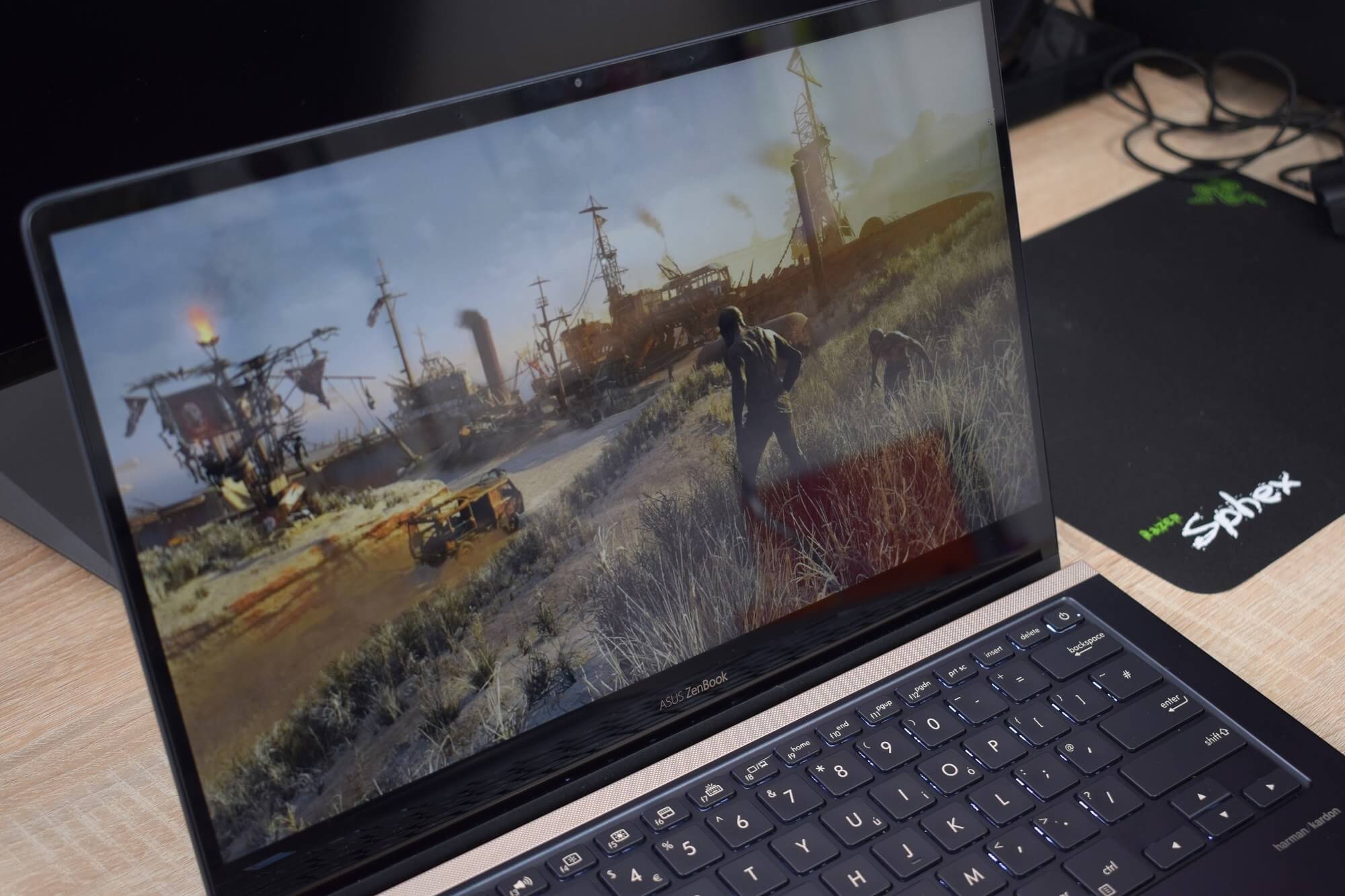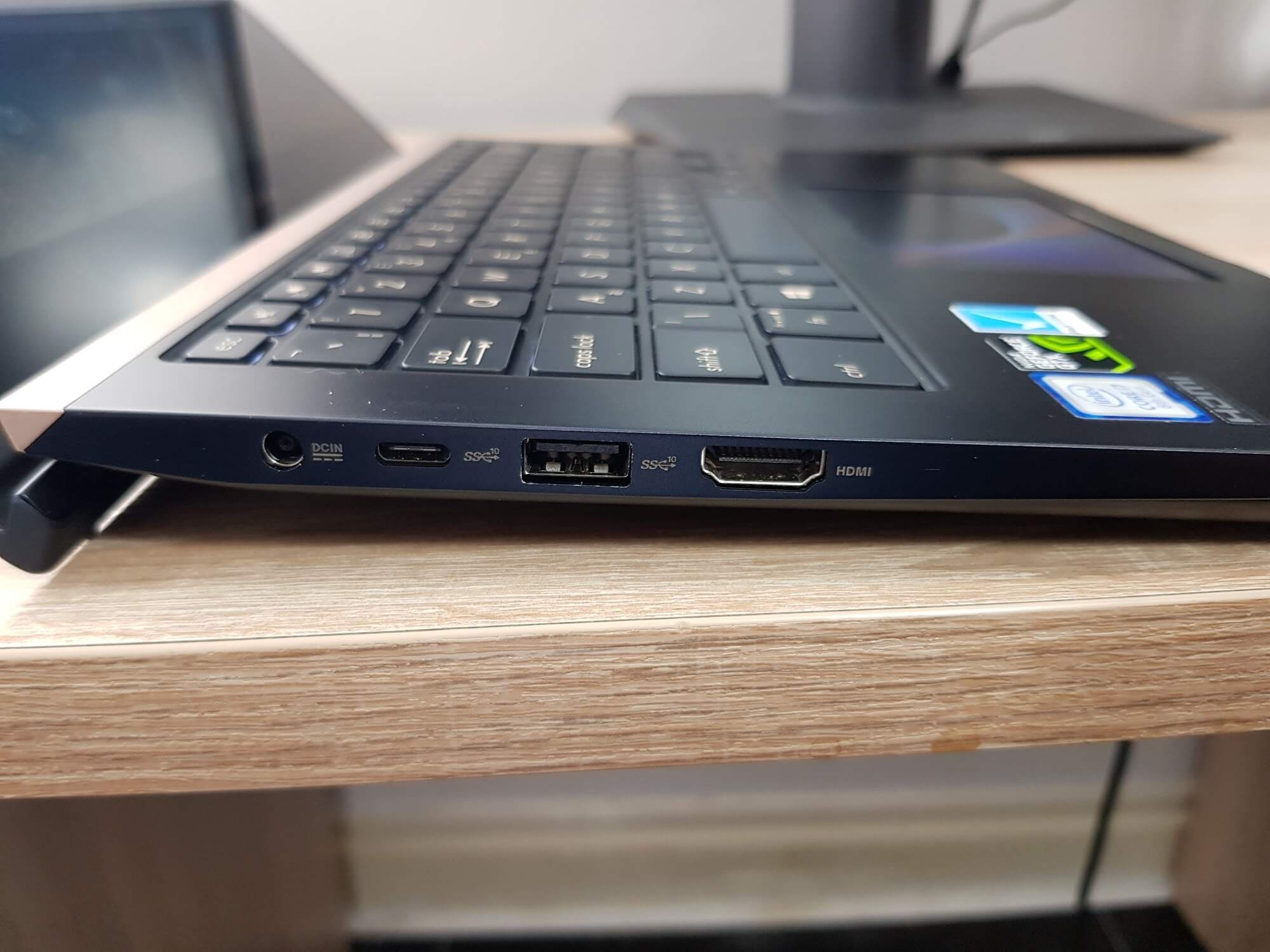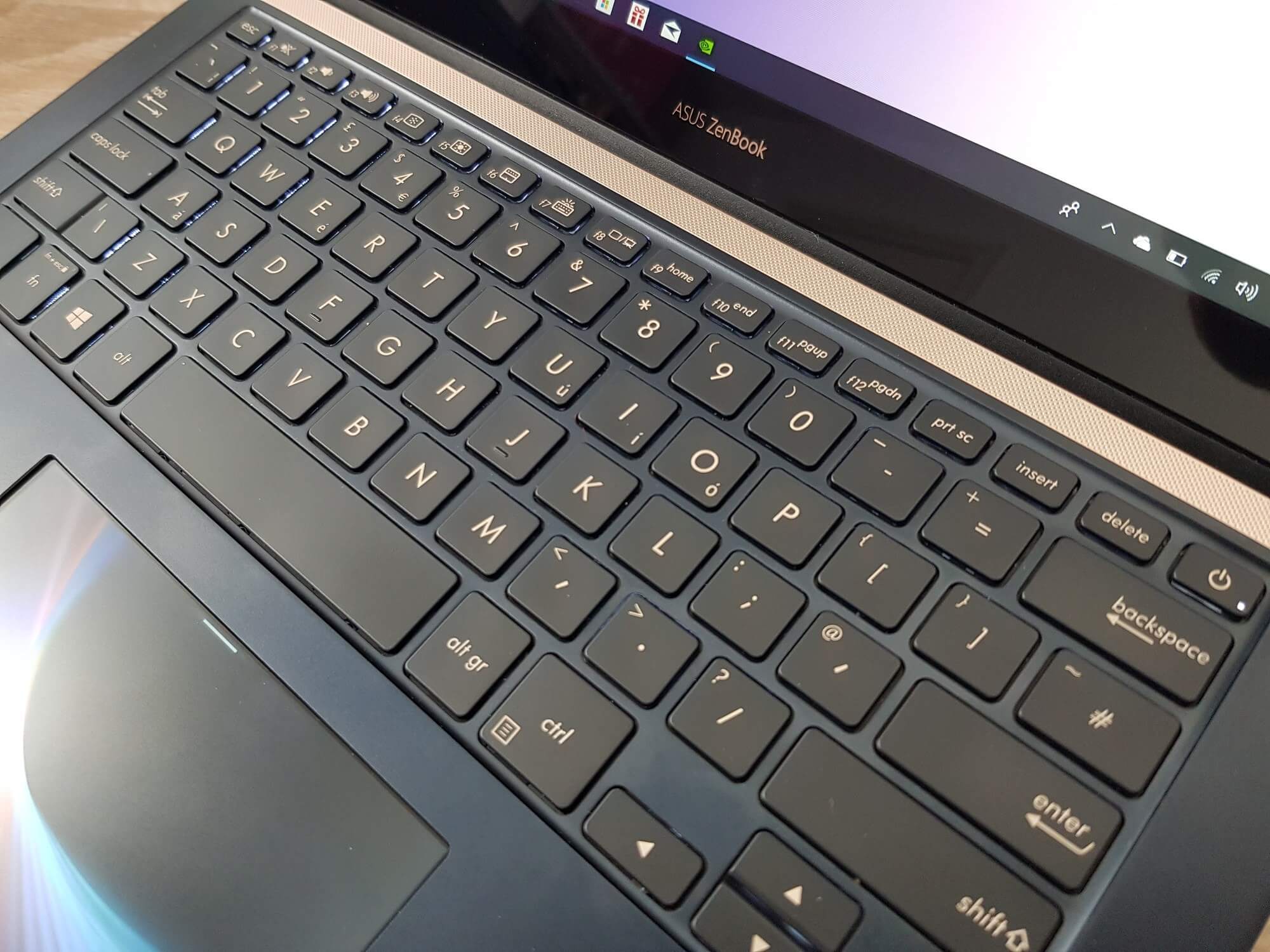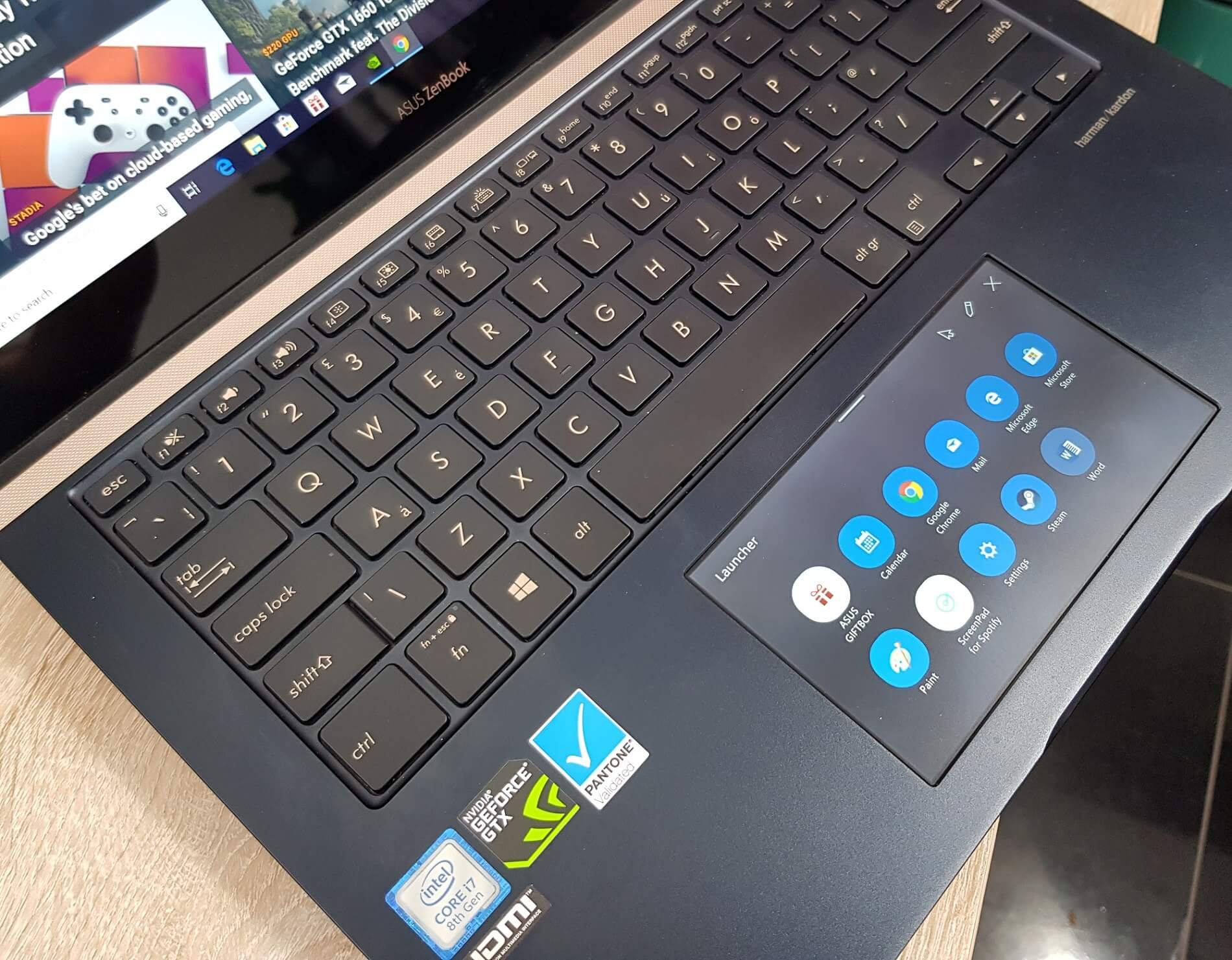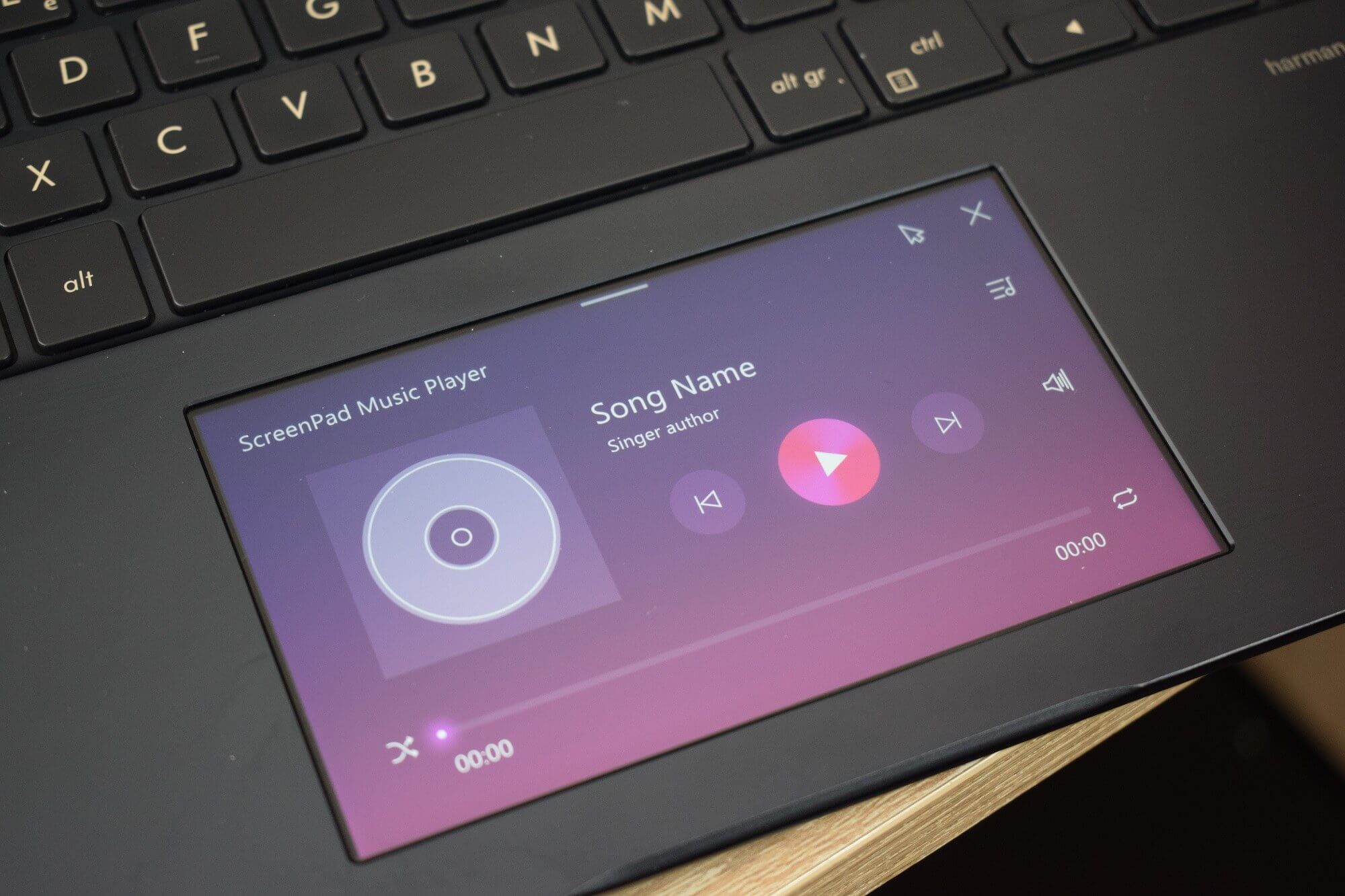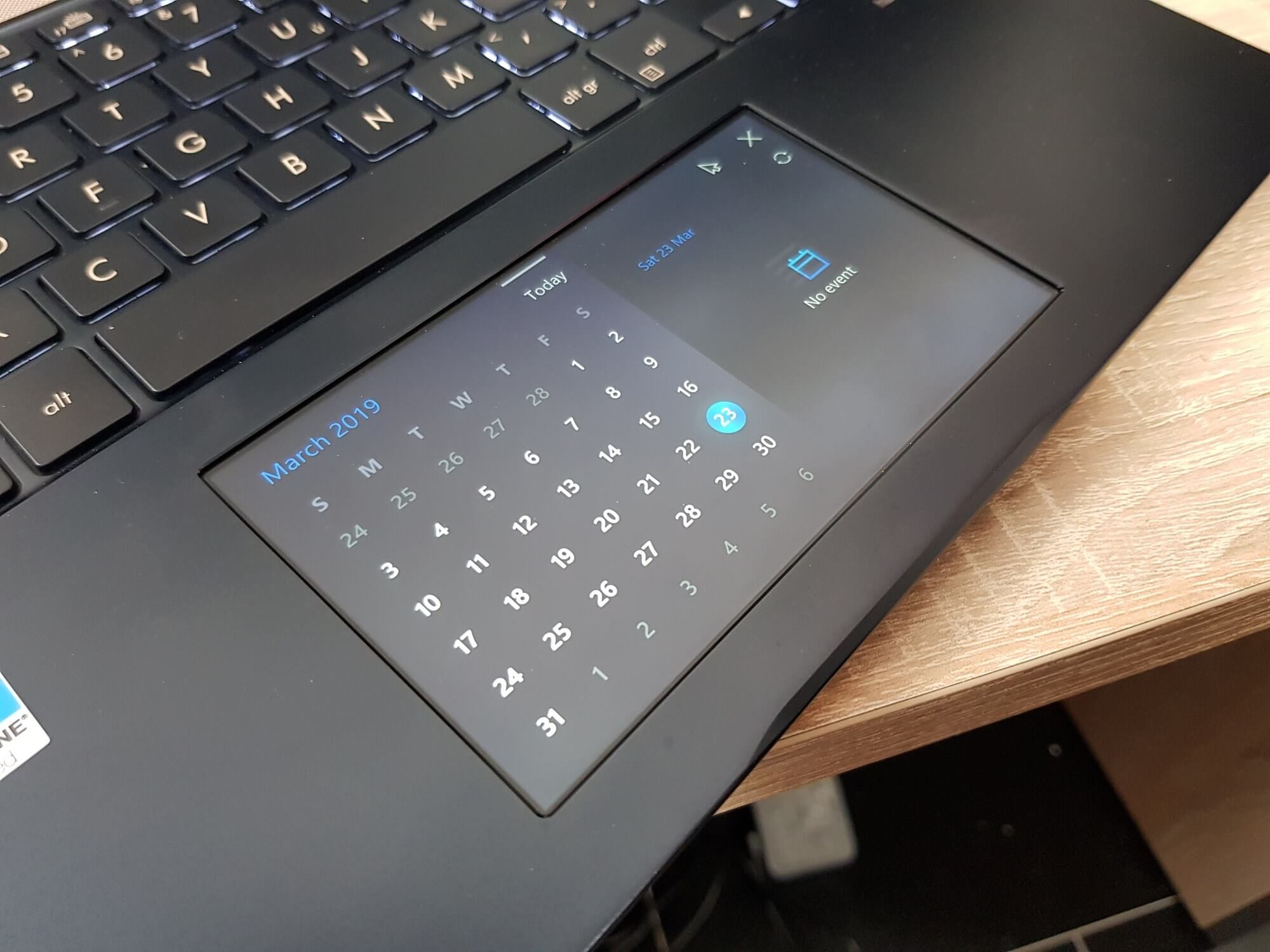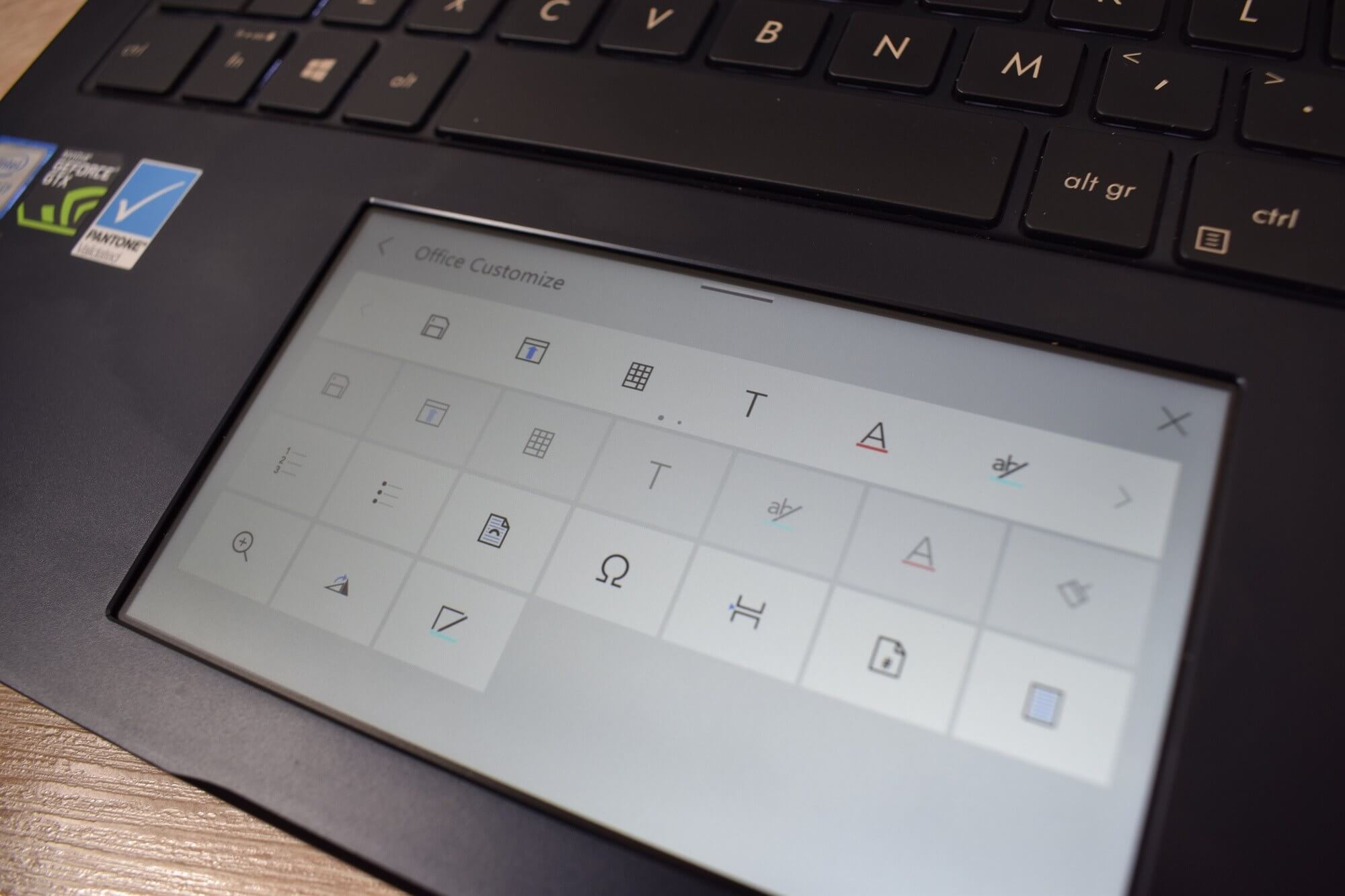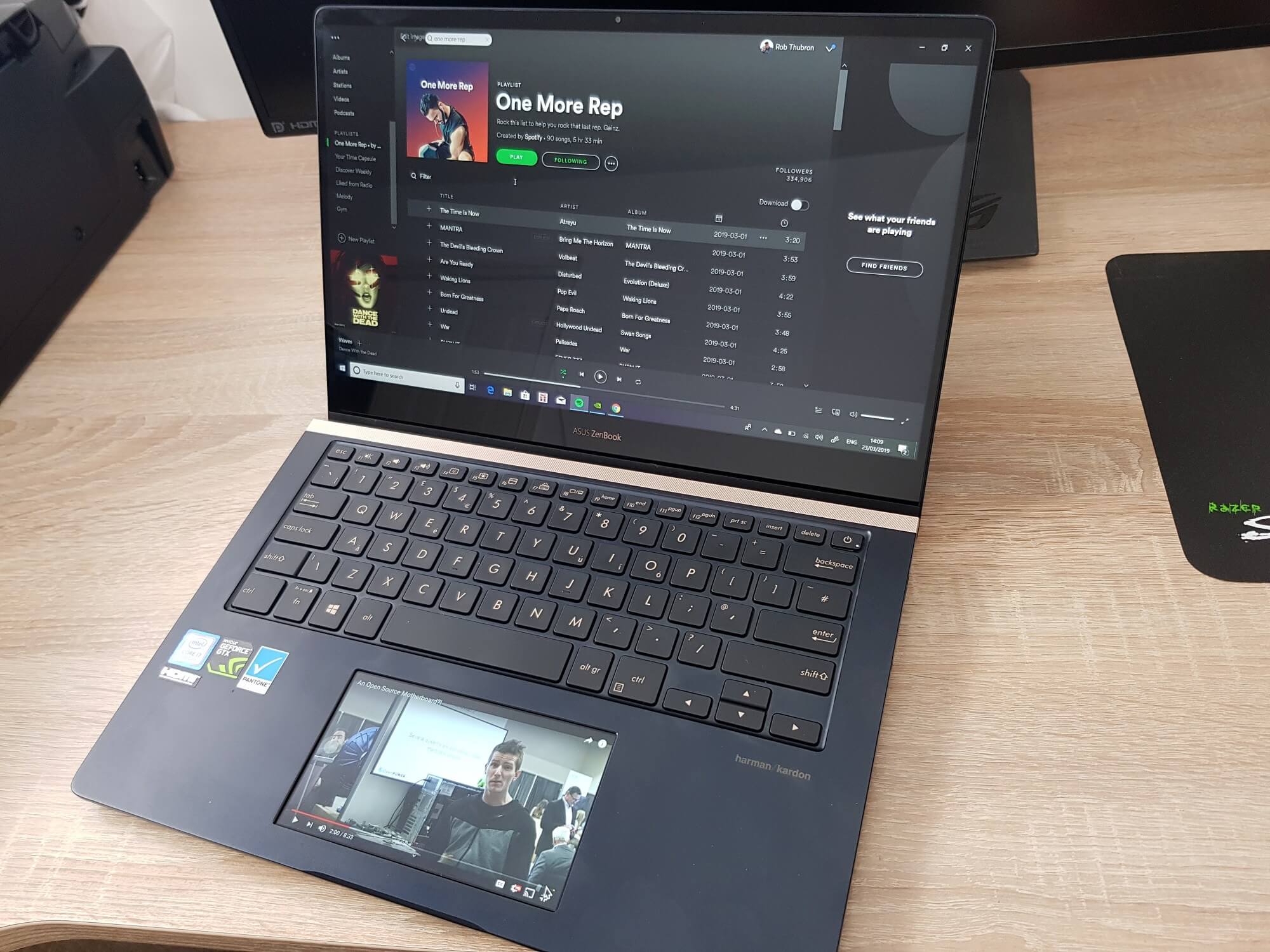To say there are a ton of laptops out there is an understatement. As is the case with smartphones, within a given segment or budget often there isn't much that differentiates them---other than components and small design changes. But with Asus' latest ZenBook Pro, there's one element that really makes it stand out from the crowd: a touchpad that's also a touchscreen.
Before we take a closer look at that particular feature, it's worth mentioning all of the Asus ZenBook Pro 14's specs. The UX480 model we received for review measures 14 inches (there's also a 15.6" version) packing a Whisky Lake-U quad-core i5 or i7 CPU. You can also choose from 8GB or 16GB of 2400MHz DDR4, and storage options include 128GB or 256GB SATA SSD, 128GB or 256GB PCIe 3.0 x2 SSD, or a 1TB PCIe 3.0 x4 SSD.
The model tested is powered by a Core i7-8565U (see our full review) clocked at 1.8GHz and can boost to 4.6GHz. While this isn't on the same level as the i9-8950HK found in the top-end 15.6" model, it's more than enough power for everyday users and can handle most professional tasks, such as video and photo editing---we did notice the underside got pretty toasty at times though.
The ZenBook comes with a 'Pro' moniker, but that doesn't mean it relies solely on integrated graphics; instead, you get a GTX 1050 with either 2GB or 4GB of GDDR5 VRAM. It's the Max-Q version, allowing for a more efficient, space-saving design.
While this isn't the GPU you want when playing Metro Exodus at max settings, the GTX 1050 can hold its own when you tone things back. I found that even this 2GB version kept Far Cry 5 and other older but still demanding titles at 30fps or above as long as the settings weren't maxed.
At 3.5lbs (1.6kg) and measuring 17.9mm, this isn't the slimmest or lightest of laptops, which is partially due to the ScreenPad and the dedicated GPU. But it does feel reassuringly sturdy. It's also a very nice-looking device, with fetching dark blues and rose gold accents.
One interesting feature of the design is the ErgoLift hinge. This elevates the keyboard section off your desk at an angle of three degrees when the lid is open, supposedly improving airflow, typing, and acoustics. It's something we've seen variations of in other laptops, and while the hinge does have its benefits when on a flat surface, I sometimes found it dug into my legs when using the machine on my lap.
While there's no fingerprint reader, you do get the security of signing in through Windows Hello and the built-in IR camera.
It feels like the ZenBook Pro was designed with desks in mind. The Harmon Kardon-branded stereo speakers are satisfyingly loud and meaty, but their position means they can sound muffled when on a user's lap. Ultimately, it's definitely one of the better sounding machines at this price range, but not quite as good as some of the more expensive laptops.
The 14-inch display is a touchscreen, which some argue is an unnecessary feature on laptops that aren't 2-in-1 convertibles or detachables, I found it to be quite helpful when used in conjunction with the TouchPad, especially when in Extension Display mode.
Asus even makes its own iPad-style pen but, like Apple's accessory, it must be bought separately---though it's about half the price or cheaper.
At this size, you get the option of a full HD display (1920 x 1080) resolution with a 60Hz refresh rate, but the 15.6-inch ZenBook Pro offers a 4K version. It boasts 100 percent coverage of the sRGB color gamut, has Pantone Validated certification for better color accuracy, and Delta-E of less than three. I found the screen to be noticeably colorful and vibrant, though its maximum brightness of around 280 nits would benefit from being higher when you're using it outside on sunny days.
Asus claims that the ZenBook Pro 14's 70Wh battery will last 12.5 hours with the screen brightness on 80 percent and battery saver mode turned on. How long the laptop runs for will depend entirely on how much you use the ScreenPad. Keep the second screen turned off and you'll get close to what Asus claims, but constantly watching tiny YouTube videos and playing around with apps will see your juice drain at a surprisingly rapid rate.
I liked the keyboard on the ZenBook. The chiclet-style keys feature adjustable backlighting, 1.4mm of travel, and are sturdy enough that even the most heavy-handed of typists should find them agreeable. While it doesn't compare to the Surface Book 2's magnificent keyboard, I still found it a pleasure to use and couldn't find any complaints, though some might find them a bit mushy.
There are fair number of ports on offer here: a USB 3.1 Gen2 Type-C, a USB 3.1 Gen2 Type-A, a USB 2.0, a HDMI port, microSD slot, and an audio jack. It doesn't have Thunderbolt 3, sadly, but neither does the much more expensive Surface Book 2.
When it was released last year, Asus said the ZenBook Pro came with world's first smart touchpad. Sticking the word "smart" behind words to describe products that aren't particularly clever or useful has been a tech industry habit for years, but is this one of the exceptions?
The ScreenPad measures 5.5 inches and boasts a full HD resolution. There are four modes on offer, which can be selected using the F6 key: ScreenPad mode, Extension Display, Touchpad mode, and Touchpad Disabled.
ScreenPad mode is the main feature here. The first thing you'll notice is that despite being a touchscreen, it's also an excellent trackpad that works flawlessly. But Asus wants you to use the apps, which are accessed by swiping down from the top.
In addition to simple applications such as the calculator, calendar, and media player, there's a launcher for starting the likes of Steam, Chrome, and Mail. You can also access the Asus store, where you can download ScreenPad apps to sit alongside those that are pre-installed, such as Office.
The ScreenPad offers various functions depending on what you're doing and what apps are installed. Watching YouTube, for example, will bring up video controls, while the Spotify app, which sadly didn't want to work for me, offers similar functions for the streaming music service.
But possibly the best integration is with Microsoft Office products. Bring up Word or Excel and the ScreenPad lets you save your work, change fonts and colors, and much more.
While the feature is innovative and offers more functionality than the MacBook Pro's Touch Bar, it's hard to imagine anyone buying a ZenBook Pro for the ScreenPad alone. The biggest problem, other than the occasional glitches, is there still isn't enough apps out there. It would certainly be interesting to see one for social media sites or a Steam app where you could scroll through all your games/friends.
Then there's Extension Display; essentially, it turns the ScreenPad into a second monitor. It's meant to aid multitasking by allowing you to, for example, move your emails or a Chrome window running Facebook onto the small screen, all while you use the main display for something else. The idea behind the Extension Display seems solid enough, though I feel the screen is just a bit too small for it to work the way Asus intends. But it does look super cool when using it in public, admittedly.
The Asus ZenBook Pro 14 is a fine laptop that's great for general use, handles most games, and can run professional apps, but the TouchPad is not a killer feature. While it will certainly make you stand out in a coffee shop, more developers need to support it to fulfill its potential, but then again, you could argue that Apple's touchbar is a failure and even touchscreens on laptops are not killer features for most.
For pros who work with photo and video, spending the extra cash and go for the 15.6" version of the same laptop may be worthwhile for the 4K display, while hardcore gamers are likely to pick something with a beefier graphics card and VRR. The Asus ZenBook Pro thus occupies a nice middle ground where the ScreenPad is an added bonus.
The ZenBook Pro 14 gets it right in striking a good balance is every department and at a competitive price. Currently there's no US availability for the 14" model we reviewed, but it is readily available in UK and other European countries. In the UK it's currently selling for £1,199 ($1,590). In the States the 15.6-inch, 4K version, which comes with Thunderbolt, an i7-8750H CPU, and the same TouchPad is selling for $1,549 at Best Buy. If you're looking for a good all-rounder with a focus on creators, and one that differentiates itself from the crowd, this could be the laptop for you.
